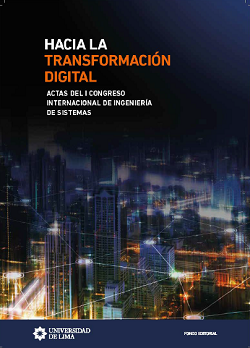Adaptación y comparación de dos metodologías de reconocimiento facial aplicadas a la detección de somnolencia en conductores
DOI:
https://doi.org/10.26439/ciis2018.5495Palabras clave:
detección de somnolencia, reconocimiento facial, accidentes de tráfico, tasa de efectividad, tasa de reconocimiento, Viola-Jones, Regression Based Facial Landmark Detection, EARResumen
Este artículo busca comparar dos metodologías de reconocimiento de expresiones faciales: Viola-Jones y Regression Based Facial Landmark Detection, adaptados para la detección de somnolencia, dando a conocer cuál de ellas es la más óptima y se adecúa mejor a las condiciones variables, considerando las restricciones de oclusión, rotación de rostro, iluminación. Tras un análisis cuantitativo bajo la matriz de confusión y poniendo a prueba las metodologías propuestas en diferentes situaciones, se realizó una comparación con los resultados obtenidos. Ocurren diferentes efectos por la falta de sueño como la disminución del tiempo de reacción, cansancio ocular, la visión se torna borrosa, menor concentración, etcétera; influyendo de manera directa en el incremento de accidentes de tráfico.
Descargas
Referencias
Manu, B. N. (noviembre de 2016). Facial features monitoring for real time drowsiness detection. En: Innovations in Information Technology (IIT), 2016 12th International Conference, pp. 1-4. IEEE.
Rosenbrock, A. Soukupová, T., y Cech, J. (Febrero de 2016). Real-Time Eye Blink Detection Using Facial Landmarks. En: 21st Computer Vision Winter Workshop.
Viola, P., y Jones, M. J. (2004). Robust Real-Time Face Detection. International Journal of Computer Vision 57(2), pp. 137–154.


